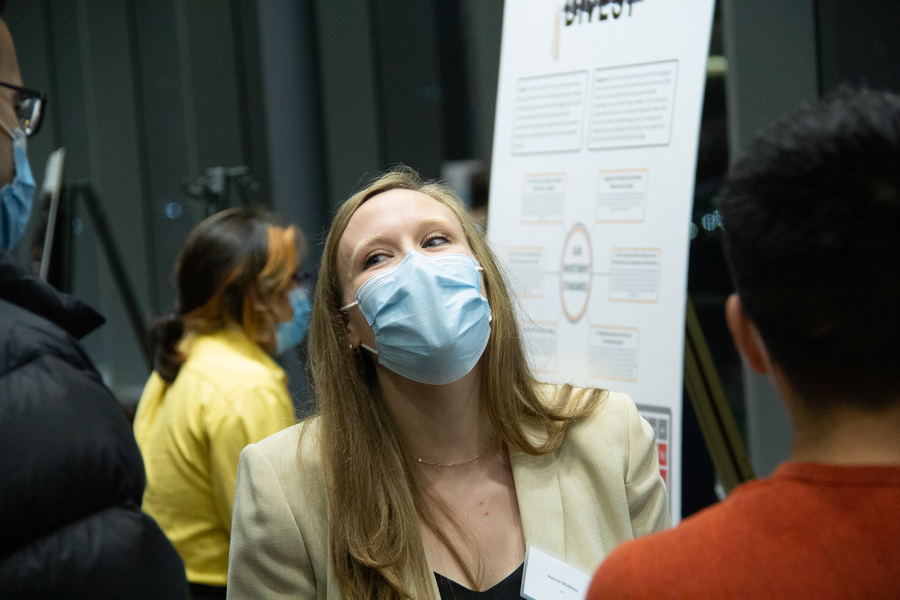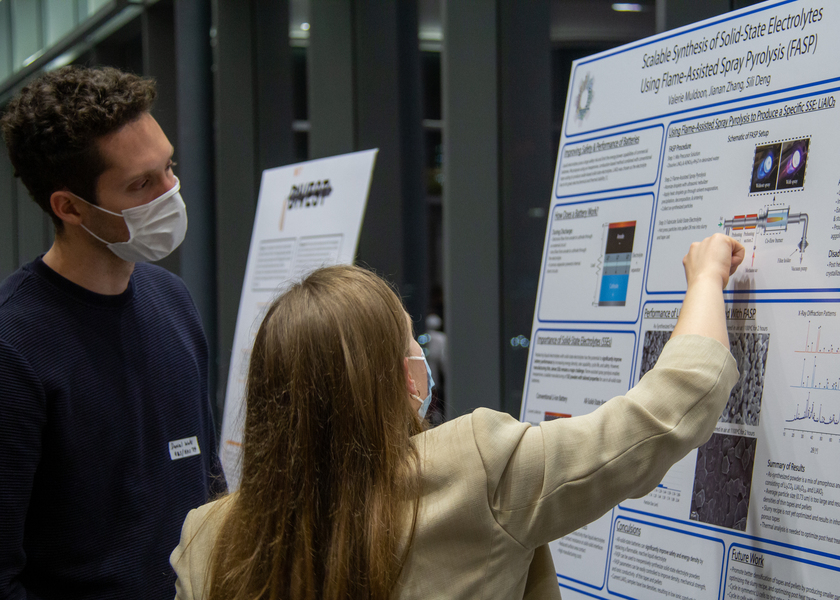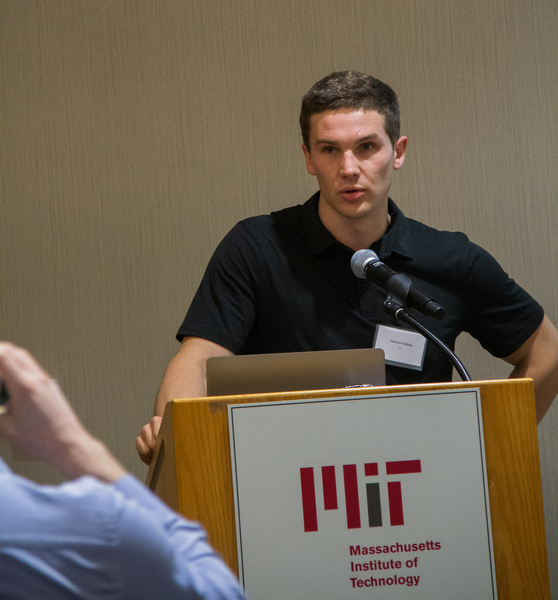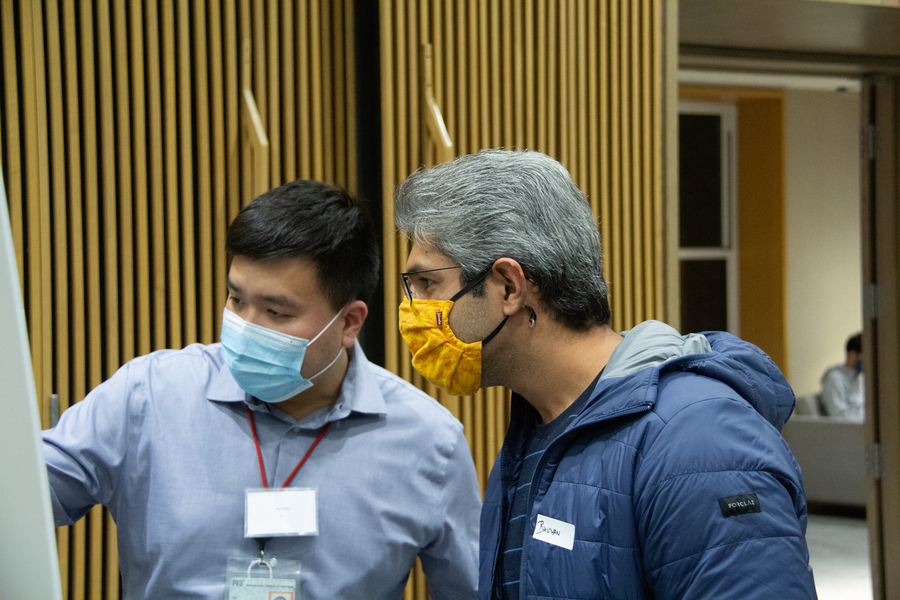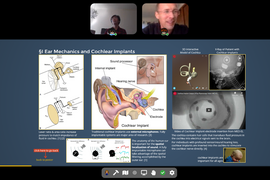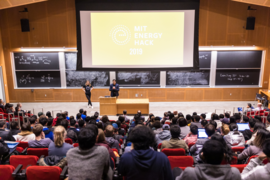On Oct. 29, leading clean technology innovators from around the world convened virtually and in-person on the MIT campus for the MIT Energy and Climate (MITEC) Club’s Energy Night 2021.
The event featured an array of participants and attendees — from MIT students and faculty to investors, engineers, and established and early-stage companies — all committed to developing cutting-edge technologies to address climate and energy challenges.
The event began with a series of virtual presentations and panels that featured speakers from premier players in the climate and technology spheres. Those presenting included policymakers and market enablers, such as ARPA-E and Actuate, investors and accelerators, like TDK Ventures and Prime Coalition, along with numerous startups, including Commonwealth Fusion Systems and Infinite Cooling. The goal was to discuss how nascent technologies could crystalize into viable solutions.
“A lot of project ideas have the potential to be commercialized,” explains Anne Liu, a research assistant at the MIT Materials Systems Lab and the event’s co-managing director. “So, the goal of our virtual session was to explore the business side of the energy ecosystem by inviting leaders to discuss how to turn ideas into successful companies.”
While the virtual session explored commercialization, the poster session presented early-stage innovation. It featured more than 70 posters by scientists, startups, and engineers from across the MIT community and far beyond.
“The poster session is one of the most exciting parts of Energy Night,” says Naomi Lutz, a fourth-year undergraduate in the Department of Mechanical Engineering. “It provides a great opportunity to step back and learn more about what others are doing in specific areas of energy.”
The work featured spanned the climate and energy sphere, ranging from nuclear fusion to carbon capture — and even included a proposal for solar smokestacks.
“There are so many topics in energy and climate. And, yet it’s common to only connect with those in your specific track,” says Alexandra Steckmest, one of the event’s organizers and an MBA candidate at MIT Sloan School of Management. “So, we designed the poster session as a platform for people to connect with those from different realms of the energy sector.”
To the MITEC team, presenting this broader spectrum of research isn’t just exciting — it’s necessary.
“This is such a rapidly changing industry,” says Steckmest. “So, it’s important to have so many industry experts share information about the changes that are going on in it.”
The event’s hybrid format, therefore, responded to more than just the Covid-19 pandemic: it also catered to the global, collaborative, and continuously evolving nature of the energy and cleantech industries.
“After some discussion, we decided on this hybrid format,” explains Liu. “We wanted to ensure that we could have the interactivity of an in-person event while also reaching the much broader audience we had cultivated during last year’s entirely remote format.”
The new hybrid format helped the team cast a wide net. In total, 400 people attended the in-person poster session while nearly an additional 400 people attended virtually from around the world.
Yet, despite an increasingly global scope, Energy Night still retained a distinctly local composition. Numerous companies present at the virtual session hailed from across Greater Boston, and, quite often, near MIT: Commonwealth Fusion Systems and Infinite Cooling retain offices within Somerville or Cambridge, and each spawned from MIT.
“There are so many companies coming out of [MIT] that go on to establish themselves in Boston and Cambridge,” notes Steckmest. “That makes [Energy Night] well-positioned to build connections and generate value for local accelerators.”
MITEC continues to cultivate these local connections while also contributing to Boston’s unique cleantech culture.
“What sets Boston apart is its emphasis on long-term solutions that are not always easily achievable through conventional venture capital,” says Liu.
When planning Energy Night, she and her team sought to invite both short- and long-term solutions to showcase Boston’s aspirational culture while also offering a venue for established investors to seek new, more readily deployable technologies.
Perhaps the greatest testament to Energy Night’s ongoing success is its tendency to come full circle.
“Over the past few years, we’ve featured serial presenters from MIT that have gone on to found their own companies,” explains Liu. “So, for a lot of projects, we see a transition from an idea to a successful business.”
Form Energy, for instance, is an MIT spinoff founded in 2017 with the mission of creating low-cost, long-term energy storage. Its stature grew greatly following its presence at Energy Night in 2019, after which it attracted $40 million in venture capital funding.
“Whether you’re a first-year undergraduate or a long-time member of the energy and cleantech industries, we want Energy Night to generate these driving connections that lead to professional growth, as well as successful partnerships,” says Steckmest.
